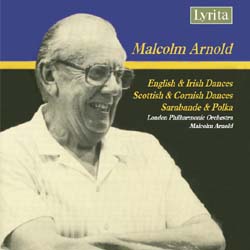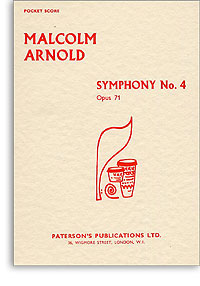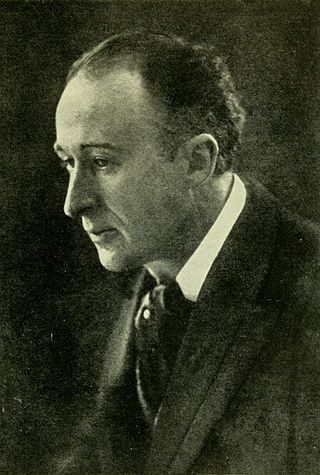This article needs additional citations for verification .(August 2008) |
The Piano Concerto No. 3 is a 32-minute concerto by the Australian-born composer Malcolm Williamson.
This article needs additional citations for verification .(August 2008) |
The Piano Concerto No. 3 is a 32-minute concerto by the Australian-born composer Malcolm Williamson.
Commissioned by the Australian Broadcasting Commission, Williamson's third piano concerto was written in 1962 while the composer was living in East Sheen, London. The work is dedicated to the British pianist John Ogdon, who gave the world premiere of the work with the Sydney Symphony Orchestra under Joseph Post. The work appeared in a concert given by the BBC Concert Orchestra under conductor Christopher Austin, with Piers Lane as soloist, on 20 November 2001 to celebrate the composer's 70th birthday. [1]
The concerto is broken up into four separate movements, which are as follows:
Piano soloist; 2 flutes, 2 oboes (2nd doubling cor anglais), 2 clarinets (2nd doubling bass clarinet), 2 bassoons, 4 horns, 2 trumpets, two tenor trombones, bass trombone, tuba, timpani, percussion (including snare drum, triangle & clash cymbals), and strings. [3]
The original version (from the LP recorded in 1974) is now available in a newly remastered edition on the Lyrita label with the composer as soloist, accompanied by the London Philharmonic Orchestra under Leonard Dommett. This was the only recording of the concerto for a long time. [2] In 2014 came a new Hyperion recording by Piers Lane with the Tasmanian Symphony Orchestra, led by Howard Shelley (recorded in April 2013).
Ellen Taaffe Zwilich is an American composer, the first female composer to win the Pulitzer Prize for Music. Her early works are marked by atonal exploration, but by the late 1980s, she had shifted to a postmodernist, neoromantic style. She has been called "one of America's most frequently played and genuinely popular living composers." She was a 1994 inductee into the Florida Artists Hall of Fame. Zwilich has served as the Francis Eppes Distinguished Professor at Florida State University.
Ruth Dorothy Louisa ("Wid") Gipps was an English composer, oboist, pianist, conductor, and educator. She composed music in a wide range of genres, including five symphonies, seven concertos, and numerous chamber and choral works. She founded both the London Repertoire Orchestra and the Chanticleer Orchestra and served as conductor and music director for the City of Birmingham Choir. Later in her life she served as chairwoman of the Composers' Guild of Great Britain.
Gordon Percival Septimus Jacob CBE was an English composer and teacher. He was a professor at the Royal College of Music in London from 1924 until his retirement in 1966, and published four books and many articles about music. As a composer he was prolific: the list of his works totals more than 700, mostly compositions of his own, but a substantial minority of orchestrations and arrangements of other composers' works. Those whose music he orchestrated range from William Byrd to Edward Elgar to Noël Coward.
The Piano Concerto, Op. 38, by Samuel Barber was commissioned by the music publishing company G. Schirmer in honor of the centenary of their founding. The premiere was on September 24, 1962, in the opening festivities of Philharmonic Hall, now David Geffen Hall, the first hall built at Lincoln Center in Manhattan, with John Browning as soloist with the Boston Symphony Orchestra conducted by Erich Leinsdorf.
The Piano Concerto No. 3 in E major, Sz. 119, BB 127 of Béla Bartók is a musical composition for piano and orchestra. The work was composed in 1945 during the final months of his life, as a surprise birthday present for his second wife Ditta Pásztory-Bartók.

English Dances, Op. 27 and 33, are two sets of light music pieces, composed for orchestra by Malcolm Arnold in 1950 and 1951. Each set consists of four dances inspired by, although not based upon, country folk tunes and dances. Each movement is denoted by the tempo marking, as the individual movements are untitled.
The Piano Concerto No. 2 in G major, Sz. 95, BB 101 of Béla Bartók is a musical composition for piano and orchestra. The work, which was composed between 1930 and 1931, is notorious for being one of the most difficult pieces in the repertoire.

Piers Lane is an Australian classical pianist. His performance career has taken him to more than 40 countries. His concerto repertoire exceeds 75 works.

The Symphony No. 4, Op. 71 by Malcolm Arnold was finished on 13 July 1960. It is in four movements:
The Symphony No. 1 Elevamini is an orchestral work by Australian-born composer Malcolm Williamson.
Jean Perrin was a Swiss composer and pianist. He composed in a neo-classical style, sometimes approaching polytonality, and his music shows the influence of Stravinsky and Poulenc.
The Concerto Fantasy for Two Timpanists and Orchestra is a double timpani concerto written by Philip Glass in 2000. It is paired with the Cello Concerto on Vol. I of Glass' Concerto Project, a set of eight concerti by the composer. A typical performance of the work lasts 25–28 minutes. It was written for Jonathan Haas and later recorded by Evelyn Glennie, and was premiered by Haas and Svet Stoyanov with the American Symphony Orchestra in Avery Fisher Hall, Lincoln Center, conducted by Leon Botstein. The work was commissioned jointly by the American Symphony Orchestra, the Peabody Symphony, the Milwaukee Symphony, the St. Louis Symphony and the Phoenix Symphony. In 2004, a transcription for wind ensemble was written by Mark Lortz, which debuted at Peabody Institute in 2005.
Benjamin Britten's Piano Concerto, Op. 13, is the composer's sole piano concerto.

The Piano Concerto in C minor is one of the early compositions by the English composer Frederick Delius. The piece underwent repeated revisions that resulted in the existence of three major versions which significantly differ from one another. The first public performance of any version was played by Julius Buths with the conductor Hans Haym on 24 October 1904 in Elberfeld, Germany.
The Concerto for Orchestra is a four-movement concerto for orchestra written in 1969 by the American composer Elliott Carter. The work was commissioned by the New York Philharmonic to commemorate their 125th anniversary and was premiered by the orchestra under the conductor Leonard Bernstein in the Philharmonic Hall, New York City, on February 5, 1970.
The Cello Concerto is a composition for solo cello and orchestra by the American composer Elliott Carter. The work was commissioned by the Chicago Symphony Orchestra for the cellist Yo-Yo Ma. It was first performed in Chicago, Illinois, on September 27, 2001 by Yo-Yo Ma and the Chicago Symphony Orchestra under the conductor Daniel Barenboim.
The Concerto for Piano and Orchestra is a piano concerto by the American composer John Corigliano. The work was commissioned by the San Antonio Symphony and was first performed on April 7, 1968, by the pianist Hilde Somer and the San Antonio Symphony under the direction of Victor Alessandro. The piece is dedicated to John Atkins.

Piano Concerto No. 1, W453, is a composition for piano and orchestra by the Brazilian composer Heitor Villa-Lobos, written in 1945. A performance lasts about 38 minutes.

The Piano Concerto in A minor, Op. 17, is the only piano concerto written by the Polish composer and pianist Ignacy Jan Paderewski. It was written in the composer's twenties, with the first movement dating back to 1882, although the majority of the work was composed in 1888 and scored in 1889. After its completion, the composer showed the concerto to his friend Saint-Saëns, who admired it, and especially the andante movement. It premiered the same year in Vienna, achieving great success, where it was conducted by Hans Richter.
The Concerto for Piano and Orchestra is a piano concerto written by the American composer Matthew Aucoin. The work was commissioned by the Gilmore International Keyboard Festival. Its world premiere was performed by the pianist Conor Hanick and the Alabama Symphony Orchestra under the direction of Carlos Izcaray at the Alys Robinson Stephens Performing Arts Center on October 7, 2016.